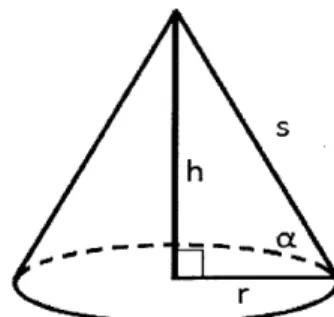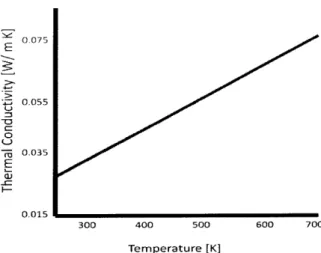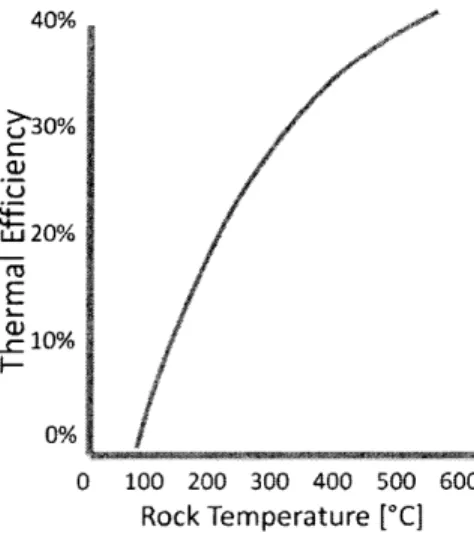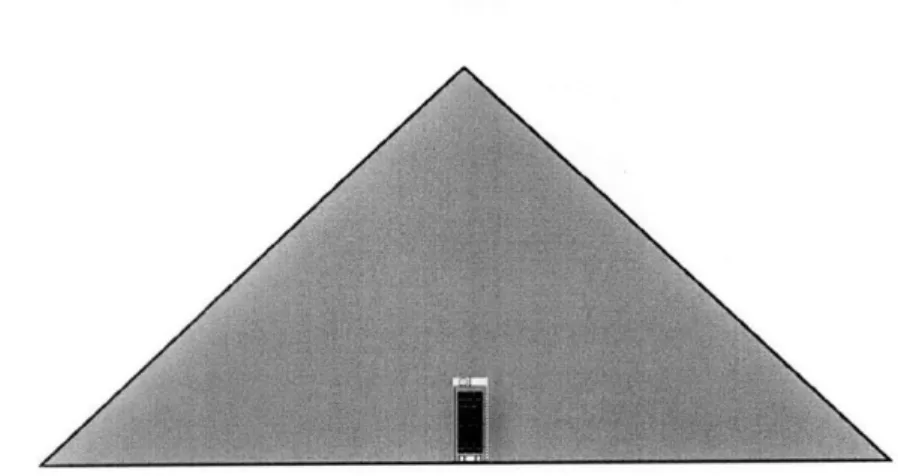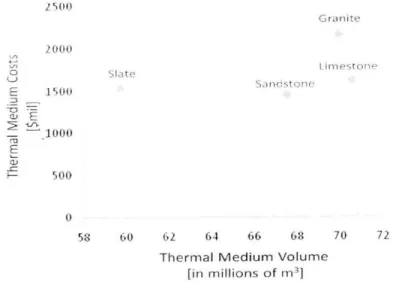Analysis of Novel, Above-ground Thermal Energy
Storage Concept Utilizing Low-cost, Solid Medium
By
Mark Michael BarinCau
SUBMITTED TO THE DEPARTMENT OF MECHANICAL ENGINEERING IN PARTIAL FULFILLMENT OF THE REQUIREMENTS FOR THE DEGREE OF
BACHAELOR OF SCIENCE IN MECHANICAL ENGINEERING AT THE
MASSACHUSETTS INSTITUTE OF TECHNOLOGY JUNE 2010
0 2010 Mark Michael Barineau. All rights reserved.
ARCHNES
MASSACHUSETTS INSTITUTEOF TECHNOLOGY
JUN 3 0 2010
LIBRARIES
The author hereby grants to MIT permission to reproduce and to distribute publicly paperand electronic copies of this thesis document in whole or in part in any medium now known or hereafter created.
Signature of Author:
Department
If
A/
I
of Mechanical Engineering
May8, 2010Certified by:
I A I/ I/ rRonald C. Crane ro
or
77
Ahmed F. Gh6niem
of Mechanical Engineering
Thesis Supervisor Accepted by:John H. Lienhard V
lomns rrotessor of Mechanical Engineering Chairman, Undergraduate Thesis Committee
ANALYSIS OF NOVEL, ABOVE-GROUND
THERMAL ENERGY STORAGE CONCEPT
UTILIZING LOW-COST, SOLID MEDIUM
By
MARK MICHAEL BARINEAU
Submitted to the Department of Mechanical Engineering
on May 28, 2010 in partial fulfillment of the
requirements for the Degree of Bachelor of Science in
Mechanical Engineering
ABSTRACT
Clean energy power plants cannot effectively match peak demands without utilizing
energy storage technologies. Currently, several solutions address short term demand
cycles, but little work has been done to address seasonal cycles of energy demand. This
paper explores the concept of creating a large-scale, above-ground thermal energy storage
system that uses inexpensive rock as the storage medium.
A thermodynamic model was created to verify the technical feasibility of the proposed
system, and economic factors were considered. Granite, limestone, sandstone, and slate
were determined to be practical mediums. Further research is necessary to understand
specific conditions and processes within the system, along with more thorough economic
analysis. However, the model supports the technical and economic feasibility of the
proposed thermal storage system.
Thesis Supervisor: Ahmed F. Ghoniem
ACKNOWLEDGEMENTS
I would like to express my deep gratitude for my thesis supervisor Professor Ahmed Ghoniem. This thesis would not have been possible without his support and instruction. Additionally, I would like to thank Professor Charles Forsberg for his inspiration and invaluable guidance.
I wVouid also like to thank my family for encouraging and supporting me
TABLE OF CONTENTS
List of Figtres ... ... ... ... ... 5
List of Tables ... ... 6
1. li-trodUCtiol ... II. Role of Enrergy Storage ... ... 88... 111. Energy Storage Medium... ... 10
A. Overview of Options ... 10
B. Rock Options and Properties ... I C. Storage Body Dimensions and Stability ... 13
D. Other Design Considerations ... 15
IV. Exterior Barrier and Insulation ... 16
V . E nergy T ransfer Processes ... 17
A . E nergy T ransfer... 17
B . Input Energy Processes... 17
C . E nergy E xtraction ... 18
V I. T herm al A nalysis ... 19
A . H eat C apacity ... 19
B. Heat Loss ... 22 V II. C o nclu sio n ... 2 3 B ib lio grap hy ... 2 6
LIST OF FIGURES
Figure 1. Proposed integration of above-ground thermal energy storage body with surplus heat from power plants heating solid, inorganic medium. Energy is
withdrawn and utilized by geothermal power plants.
Fliure 2. Approximate electricity demand in the US during a typical day.
Figure 3. The role of energy storage in leveling electricity demand where energy demand observed by power plants increases during off-peak hours and observed demand is reduced during peak hours. The energy demands on the system remain constant.
Figure 4 Specific heat of rock medium as a ftnction of temperature. Granite and sandstone have a-p transitions. Slate has some variability due to greatest range in composition.
Figure 5. Thermal conductivity of rock medium as a function of temperature. Sandstone has greatest variation, but tends to be highest. Granite has less variation. Limestone has some variation, and tends to have lower
conductivity overall. Slate has the lowest thermal conductivity. Figure 6. Critical dimensions of conical pile.
Figure 7. Thermal conductivity of common fiber glass as a function of temperature. Figure 8. Turbine efficiency as a function of rock temperature.
Figure 9: MIT's Green building compared to size of proposed 1 GWt-year storage option.
Figure 10. Costs of proposed rock mediums and volumes required for 1 GWt-year storage capacity.
Figure 11. Thermal Capacity at three temperature levels versus height of granite rock pile.
Figure 12. Thermal efficiency of the storage system for three operating temperatures versus the necessary fiberglass insulation.
LIST OF TABLES
Table 1. Approximate densities of potential rock mediums. Sandstone has greatest variability due to large range of porosity levels.
Table 2. Approximate costs of metric ton of crushed rock medium in 2008 according to USGS.
I. Introduction
Currently, clean energy sources cannot be fully utilized due to their high capital costs and low operational costs, which makes clean power plants economically unsuitable
for matching the cvclical energy demands placed on the electricity grid. However, by utilizing an energy storage system, clean power plants would be able to supplant fossil fuel plants in the energy supply portfolio.
Thermal energy storage system is composed of three basic component systems: (1) the storage medium, (2) energy transfer equipment, and (3) containment and insulation. [1] While several energy storage technologies exist, few are able to
accommodate the seasonal variation in energy demand. Such a system would require the storage of large amounts of energy. The system proposed in this paper uses inexpensive rock as the energy storage medium. Functionally, the large-scale volume of rock should be able to supply enough energy to match the peak seasonal demand. Additionally, the proposed system must be economically viable.
As shown in Figure 1, surplus thermal energy from clean sources such as nuclear power plants will be stored as sensible thermal heat in a large pile of rock. When needed,
this reserve heat shall be extracted and used to generate power in a similar manner as a geothermal plant. Because the energy is to be stored for several months, minimizing heat loss is a high priority. Therefore, the rock volume will be insulated.
Thermal Input Thermal Output
Nuclear Power Geothermal Power
PlantPlants
Above-ground thermal energy storage body
Figure 1. Proposed integration of above-ground thermal energy storage body with surplus heat from power plants heating solid, inorganic medium. Energy is withdrawn and utilized by geothermal power plants.
II. Role of Energy Storage
Large-scale energy storage, also called grid energy storage, refers to the concept
of storing energy from power plants during times when production exceeds consumption.
When an energy deficit occurs due to increased demand or decrease production, energy is
extracted fiom these reserves. In order to understand the technological requirements of a
system of power plants that utilizes grid storage. one must understand the demands
placed upon the system.
Electricity consumption in developed nations is highest from approximately 9am
to 6pm, as shown below. This time is known as peak load, and is typically twice the
electricity demand of the minimal demand, known as base load. The increased demand is
the result of normal business operations and the continued demand during the following
hours when millions of people return home from work. Additionally, seasonal electricity
demand is also relatively sinusoidal. More energy is required to maintain comfortable
living conditions during hot summers and cold winters.
Percent of daily p at
intermediate load
Base. load
Timt of day :hr:
Figure 2. Approximate electricity demand in the US during a typical day.
Energy storage technologies allow energy sources and production capacity to be
utilized in more efficient ways. Storage can benefit energy resources that are transient in
nature, such as solar or wind, because storage technologies make energy reserves
available during times of electricity deficits. In effect, this introduces significantly higher
control and reliability for an unpredictable energy resource, and thus enables it to be utilized as a base-load electricity source.
Similarly, energy storage allows consistent electricity sources that are typically used solely for providing base load power to be used to provide intermediate and peak-load electricity supply. While ha\ing this ability results in efficiency losses from the storagye processes, it s still appealing with regards to increasing a power plant's flexibility to match electricity demand.
Clean energy sources such as renewables and nuclear power are associated with high capital costs, but low operational costs, and therefore the total costs are independent of power output. Due to these characteristics, it would not be economically feasible to use current clean energy sources to match demand. Conversely, the cost of fossil fuels is non-trivial, and the initial capital costs for the fossil fuel plants are low. Therefore, operating fossil fuel power plants at partial capacity is economical for matching electricity demand variations. However, as the global demand for energy increases and awareness of fossil fuel emissions grows, it is essential that renewables and low-emission technologies have a greater role in electricity generation. Deployment and utilization of clean energy sources will require implementation of complementary energy storage technologies.
Having the ability to store clean energy during times of lower demand and then drawing upon such reserves eliminates the need to activate fossil fuel plants during peak load, assuming clean energy sources provide enough capacity. This concept is shown in the figure below.
F .: .nt
Tim of da hr.
Figure 3. The role of energy storage in leveling electricity demand where energy demand observed by power plants increases during off-peak hours and observed demand is reduced during peak hours. The
energy demands on the system remain constant.
Numerous energy storage technologies currently exist, and many more are in
development. While there is a clear need and growing demand for storage technologies
that can complement clean energy sources, relatively few options are practical for
large-scale, centralized applications in the electrical grid. However, this paper is an initial
assessment of a unique solution to this energy challenge. While sensible thermal energy
storage is impractical for small applications due to heat losses, when used for large scale
applications, it may serve as a viable solution that deserves further research and
development.
III. Energy Storage Medium A. Overview of Options
Many above-ground energy storage options exist, but they become technically and economically infeasible for large scale storage applications. Batteries and other
chemical storage technologies are uneconomical due to their inefficiencies, and
mechanical storage such as flywheels and compressed air would be too dangerous on
such a scale. Other concepts include pumped hydro -electricity and utilizing liquid
hydrogen. For pumped hydro -electricity, surplus electricity is used to pump water to an
elevated containment area and then its potentiallenergy is used during high demand. This
option would be feasible for short term cycling, such as daily demand leveling, but would also be impractical on a large scale to address seasonal demand cycles.
The containment of fluid storage mediums at a large scale is not practical due to the cost requirements of the system and structure. Simi larlv. storing latent heat as opposed to sensible thermal energy wxould not be practical due to the phase transformation of the medium and the containment requirements. Additionally, prior research has confirmed that such energy storage mediums have relatively large material costs. [1]
A solid medium being used for thermal energy storage could be both safe and economically feasible. Organic materials will not suffice due to their low melting temperature. Many other solid materials could be considered, but for large scale applications, the cost is a significant limiting factor. Therefore, this paper will focus on using common rocks that require minimal processing prior to use and can be easily acquired. Such options include limestone, granite, slate, and sandstone. As a thermal storage medium, inorganic solid materials offer distinct advantages beyond their low cost. They also have low vapor pressures at very high temperatures and are chemically inert. [1] However, the disadvantages of such materials are that they have low specific heat and thermal conductivity, and thus grid storage systems would require a large volume of the medium to achieve the objective capacity.
B. Rock Options and Properties
A plethora of options for the rock medium exist, however this paper will focus on a few of the most available types - granite, quartz (SiO2) in the common form of
sandstone, limestone, and slate, which is composed mostly of quartz and the mineral muscovite. However, the physical and thermal properties of rocks and minerals are functions of a wide variety of parameters and external influences. [2] Therefore, the property values expressed in this paper represent a range, and any implementation of the proposed concept would require analysis of the actual rock medium to be used.
Table 1. [2] Approximate densities of potential rock mediums. Sandstone has greatest variability due to
Table 2.
pj
Approximate costs of metric ton of crushcd rock medium in 2008 according to USGS.Medium Granite Limestone Sandstone Slate
Cost [$/ met. ton] 11.58 8.56 9.18 9.52
The following two figures show a comparison of the four proposed rock mediums in context of two of the thermal properties of greatest interest - specific heat and thermal conductivity. While the mediums are within similar ranges for physical and thermal property values, it should be noted that some unique characteristics are observed.
220 1800 1600 Lrnestone 1400 1200 Slate 1000 .~ 800 600 V/* Granite 0 200 400 600 800 1000 1200 1400 Temperature [K]
Figure 4. [2] Specific heat of rock medium as a function of temperature. Granite and sandstone have a-p transitions. Slate has some variability due to greatest range in composition.
Sandstone
200 430 600 0 1 0 1200 Temperature K]
Figure 5. [2] Thermal conductivity of rock medium as a ftinction of temperature. Sandstone has greatest variation, but tends to be highest. Granite has less variation. Limestone has some variation, and tends to
have lower conductivity overall. Slate has the lowest thermal conductivity.
C. Storage Body Dimensions and Stability
-While the engineering process of constructing the pile of rock will not be detailed
in this paper, many important concepts will be considered. The pile must be stable in
order to maintain its shape, dimension, and thus thermodynamic behavior, but more
importantly, the pile must remain safe and not result in rock avalanches.
Quite simply, sediment and rock motion is initiated when the downward
component of the gravity force on the mass exceeds the force resisting the motion. These
resistive forces are associated with the cohesion and friction within the pile. Because
many of the qualities of the rock, such as static coefficient of friction, density, and shear
resistance due to cohesion, are not expected to change over time, an initially stable pile
can be assumed to be in long-term stability. Therefore, a newly constructed pile must be
dimensioned for stability. The natural shape of the pile is conical, and thus can be
described by its height and angle of slope. The slope angle of a stable pile is known as the
angle of repose. It typically ranges from 26' to 320. [4]The angle of repose can be calculated by the equation
tan a > (r. - L tan e) + tan p0
pgy cos a
where u. is slope angle, Te is the shear resistance due to cohesion, (pc is the angle of initial yield, p is the material density, y is the thickness of the potential mass movement, and L is any additional upward force, typically due to water pressure.
Even with this understanding of rock pile stability, much uncertainty exists concerning the physical properties of the specific rock medium, and thus several assumptions must be made. The stability of the rock volume is a high priority, and so any pile's angle of repose will be studied thoroughly prior to construction. Additionally, a safety factor will be used. Therefore, this paper will consider a slope angle of 25' to be a conservative estimate for the storage body.
Additionally, the model of the storage body will require the equations for the surface area and volume of the conical pile.
s
h
r
Figure 6. Critical dimensions of conical pile.
SA =
wrs
+wr
2 (2)1
V =-hwr
23
(3)D. Other Design Considerations
One possible limiting factor in the design of the thermal reservoir is the pressure drop of the heat transfer fluid. Darcv's Law models pressure drop across a Porous body
A P /IVsuperficial
L K
(4)
where - is the pressure drop per unit distance, K is permeability, p is viscosity, and L
Vsupericial is superficial velocity. As mentioned earlier, rock mediums, even of the same rock type, have relatively varied physical properties, especially permeability. Sandstone is the most permeable rock medium in consideration, and it can range in permeability from 10-4 to 1m i 2. However, even when considering sandstone, it is found that the
pressure drop can be higher than tolerable levels. [5] Therefore, the medium's
permeability must be increased. This can be accomplished by increasing the size of the rock fragments. This would increase the voids in between the rock, and thus increase the permeability of the system. However, this solution also decreases the volume of the storage medium and storage capacity, and thus would require a rock pile with larger dimensions. Additionally, larger rocks would not conduct heat as effectively, and also affect system performance.
When designing the energy storage pile, it is important to remember that several situations may arise and affect the performance of the energy transfer processes. While the central heat transfer processes will be described and modeled later in this paper, the convective and conductive heat transfer within the rock pile will be affected by internal fractures and gaps changing due to thermal expansion and contraction of the rock medium. This is an area of research that requires further study because it is unknown how different rock mediums will deform under the thermal conditions and compressive stresses within this application. [6]
Additionally, there is a dearth of information regarding the physical effects of cyclical thermal loading on solid, inorganic mediums, especially at high temperatures. It
is believed that microfiacturing is the primary mechanism for rock failure in fatigue. [2] The potential exists that such thermal conditions could degrade the medium over time, and so further research would be needed before implementation of this concept.
IV. Exterior Barrier and Insulation
The purpose of the outer covering is to insulate the heated volume of rock and to prevent water and other elements from entering and affecting the storage body. Again. cost is a limiting factor, so the barrier will not be an exotic material. This paper will not delve into the specific design of the outer layer, but a reasonable proposal would be to cover the pile with an effective insulating material such as fiberglass, and then have an outer shell of a durable metal such as steel to protect the fragile insulation from the elements. 0.075 0.055 7 0.035 E 0.015 300 400 500 600 700 Temperature [K]
Figure 7. Thermal conductivity of common fiber glass as a function of temperature.
The material costs of the insulation are unknown and would greatly depend on the
specific type and the economy of scale. Although, using the known price of common
fiberglass, one finds that it costs approximately one dollar per cubic meter. [7]
Similarly, it is found that the approximate cost of construction steel is $1700 per
cubic meter. Steel has been proposed because it is a common and readily available metal.
Also, it can be easily welded so that many sheets can be joined to form a shell that is
adequately sealed. However, due to metals' high thermal conductivity, its role in
insulating the pile would be minimal. Therefore its sole function would be to protect the
insulation, and thus it does not need to be particularly thick, likely less than one centimeter. For the model developed, the thickness of the steel shell is 5mm.
V. Energy Transfer Processes
A. InIcrnal iEneri TransferHeat transfer xwithin the storage volume is one of the most important engineering considerations in the design of a large-scale thermal energy storage system. However, in order to understand the heat transfer process, one needs to investigate the relationship between the conduction resistance and the convection resistance - known as the Biot number.
. Rcond Lc/kAs hLe
RconB
1/hAS
k
(5) where As is the porous surface area, k is the thermal conductivity of the rock, h is the heat transfer coefficient of the injected fluid, and Le is the characteristic length. Using this equation to describe the means of heat transfer shows that the Biot number is negligible for all the proposed medium and for a significant range of heat transfer coefficients. [5] This signifies that conduction dominates the internal heat transfer process and the process occurs very quickly. More importantly, this shows that the heat injection process is not a design constraint, and thus it is assumed to be a trivial aspect of the proposed storage technology.
B. Input Energy Processes
The intent of utilizing a large-scale energy storage system is to level the seasonal
energy demand, and therefore reduce the need for power plants that burn fossil fuels. Clean energy sources such as wind, solar, and nuclear can all experience expanded
deployment from adding storage technologies, but the storage concept proposed in this
paper best complements nuclear power plants. However, this paper will not focus on the energy source, but rather how the generated energy is stored in the system.
In most cases, a heat exchanger will be necessary to transfer excess thermal energy from the energy source to the transfer fluid of the storage system. The heated fluid is pumped into the rock v'olume, and after the thermal energy is dissipated into the rock medium. the fluid is pumped out and reused in the heat exchanger.
For the majority of deployed geothermal plants utilizing natural underground heat reservoirs. the temperature difference between the reservoir and the above-ground air is approximately 100'C. For the proposed storage system, three system temperatures are considered - 400K, 500K, and 800K. The lower two represent comparable AT values that are used for geothermal plants. 800K is a high-temperature option that cannot be achieved naturally in geothermal plants, but is achievable with nuclear power.
C. Energy Extraction
The energy extraction process is essentially identical to current engineered geothermal systems, and thus the necessary technologies are available. A cooled heat transfer fluid is pumped into the heated medium and then pumped out at a much higher temperature. This heated fluid is then used to power a generator. However, one key improvement is that the rock medium can be selected in order to provide the best transfer efficiency and cost minimization as oppose to relying on natural geology in an area. Also, having an above-ground storage body does not require intensive drilling processes or having to rely on extensive subterranean geological studies.
40% 320% i
E
210% 0% 0 100 200 300 400 500 600 Rock Temperature [*C]The above figure shows the relationship between the heat transfer fluid extracted from the rock pile and the thermal efficiency of a typical geothermal powx er plant. The turbine operates at much greater efficiency with higher temperature transfer fluid. however. fcw geothermal plants currently in use have access to such thermal resources.
VI. Thermal Analysis
A. Heat Capacity,
The most critical finctionality of the proposed energy storage system is that the volume of rocks must be able to store thermal energy for utilization during seasonal peaks. Prior studies have suggested a gigawatt-year of energy is required to meet these peak loads. As mentioned earlier, many factors influence the actual storage of the thermal energy. Increasing the permeability of the medium decreases the functional volume, and the proposed options for the rock medium, although similar, have different thermal properties. Also, the cost of materials may prevent achieving the ideal storage system. So although much more research and simulations are needed, approximations can be made to estimate the functionality of the proposed storage system.
cVAT = AQ
(6) Using this basic equation, a model was developed to approximate the relationship between pile dimensions, thermodynamic properties, temperature change, and stored thermal energy within the system.
Using a conservative angle of repose of 25', we find for a 1 GWt-year storage option, the rock pile will be approximately 551m tall and have a radius of 467m. This is almost 6 times the height of MIT's tallest building.
Figure 9: MIT's Green building compared to size of proposed
I GWt-year storage option.
The graph below shows a comparative resource analysis for the four rock medium
options. The type of rock was the sole varying parameter for a thermal capacity of 1
GWt-year system with operational capacity temperature of 500K. The volume of thermal
medium had a range of close to 10 million cubic meters. However, the most interesting
finding is that slate only requires a pile at nearly 60 million cubic meters whereas
limestone requires a little over 70 million cubic meters. It should be repeated that the true
volume of thermal medium will depend on its permeability, and the given volumes do not
account for the channels, fractures, or voids within the pile, and thus the actual pile could
be significantly larger.
As a thermal medium, granite is the most expensive and costs over 30% more
than the next highest rock type, limestone.
Volume of Various Rock Mediums versus Cost for 1 GWt-year Thermal Storage
2500 Granite 2000-4 Slate 100f) Linestonef0 sal ndst one 0 58 60 62 64 66 68 70 72 Thermal Medium Volume
[in millions of m3]
Figure 10. Costs of proposed rock mediums and volumes required for 1 GWt-year storage capacity at 500K.
The size of the storage body is closely related to its capacity. In Figure 11 below,
several configuration proposals are shown with several operational temperatures and a
range of storage capacities. The 2 GWt-year option at 400K would need to be at least 750
meters tall, which would be almost twice as tall as the Empire State Building.
Thermal Capacity at Various Temperatures versus Pile Height 800 700 600 500 400 300 200 100 -4-400 K -- 500 K 800K 0 0.5 1 1.5 2 2.5
Thermal Energy Capacity
[GWt-yearl
Figure 11. Thermal Capacity at three temperature levels versus height of granite rock pile.
B. Heat Loss
Developing a thermodynamic model for ideal situations without heat loss would not be particularly useful due to the nature of the proposed system. Heat loss through the outer barrier is a great concern and cause for particular engineering attention. Additionally. thermal energy can diffuse to the earth underneath the rock pile. There are three modes of thermal energy losses -- conduction through surroundings, leakage of heat transfer fluids, and convection off the exterior of the volume. For this model, fluid leakage will be ignored. The rate of conductive heat loss depends on the amount of surface area shared by the pile and the surroundings, the temperature difference between the pile and the surroundings, and the intrinsic thermal properties of the medium.
kA(T
1-
T
2)
d
(7) where d is the thickness of the surroundings.
Similarly, convection losses also depend on the exposed surface area and temperature difference, but also on the heat transfer coefficient of the fluid, h.
Q=hA(T
1-
T
2)
(8) Using these basic relations for heat loss, a thermodynamic model was developed to approximate the minimum insulation requirements and other parameters for the proposed system, and the findings can be seen below in Figure 12.
Thermal Efficiency versus Minimum Insulation Thickness
1000 T-, - 4 00 800 0.1 50 60 70 80 90 100 Thermal Efficiency[%
Figure 12. Thermal efficiency of the storage system for three operating temperatures versus the necessary fiberglass insulation. Systems with minimal heat losses require several orders of magnitude
thicker insulation. Systems with higher operating temperatures also require additional insulation.
As stated earlier, the cost of fiberglass insulation is approximated to be one dollar
for a cubic meter. While Figure 12 shows that the high-temperature, high-efficiency
system requires the thickest insulation, the low-temperature, high-efficiency option
requires the largest volume of fiberglass due to the greater volume of rock, and thus
larger surface area to cover. In this option, the total insulation cost is over $2million, but
is negligible when compared to the costs associated with the rock medium, which would
be over $3illion for such proposal.
VII. Conclusion
The great need to commit to clean energy sources is undeniable. However,
effectively utilizing such resources cannot be accomplished without innovative and
well-engineered technologies. Currently, the cyclical variability in energy demand during the
day and season to season requires low-capital, fossil fuel power plants to be brought
online to supply intermediate and peak loads. Because electricity from clean power plants
is generated essentially independent of operational costs, it is most economical for them
to remain operating at all times and supply consistent, base-load power. However, complementing clean power with energy storage provide new opportunities to utilize clean energy. Energy storage allows surplus energy to be saved in reserve until an energv deficit occurs, either due to under generation or increased demand. This ability essentially levels thc energy demand curve observed by the electricity gzrid. Because the peak demand on the grid is reduced, fossil fuel plants do not need to be brought online.
Several viable solutions exist to address daily energy demand cycles. However, much fewer options are available to address seasonal demand changes. Such a large system would need to have a capacity on the order of 1 GWt-year. Some research has been conducted on underground storage of thermal energy, but no one has researched the possibility of creating a large-scale, above-ground, thermal energy storage system. The storage system would need to use inexpensive materials to be economically feasible, and quick analysis reveals that inorganic solids, namely rocks, are the most practical. While rocks are not ideal heat storage mediums, using them in a large scale application is found to be highly functional. As the scale of the storage body increases, the relative heat losses are diminished.
Many rock types exist, but for this proposed system, four common types are recommended - granite, limestone, sandstone, and slate. While similar, each has distinct advantages and disadvantages. Slate requires a reduced volume of thermal medium, however, sandstone is the least expensive option. Further study and economic analysis of
the best rock medium would be needed to determine the best option for a particular
deployment of such a storage system due to regional availability and variability of the
rock.
The proposed system is a large pile of rock medium with a layer of insulation to
prevent heat losses to the environment, and an outer shell that protects the insulation from
the elements and contains the heat transfer fluid. Excess thermal energy is pumped into
the pile via a transfer fluid, and when needed, it is pumped out and used in a power
generation turbine. However, several design issues must be considered. The pile must be
permeable for the transfer fluid to be effective. However, greater permeability reduces the
effective storage volume. Also, the pile must be stable, and so the angle of the conical
slope should be below the angle of repose for the particular rock medium.
Much of the technology for extracting the thermal energy from the medium is already in operation at geothermal power plants. However, unlike such plants, concerns about heat losses are much greater for the proposed above-ground system. Such design issues are limited by the costs of the solutions, but the first-level economic analysis rev-eals that the costs associated with preventing heat loss are negligible where compared to the overall material costs of the rock.
Using reasonable assumptions and known values, the model of the proposed system demonstrates an underlying technical functionality and economic viability for high temperature above-ground storage systems. Further research and analysis is needed to understand some conditions within the system and the specifics of the heat transfer processes, but the initial review supports the concept.
REFERENCE
[1] Green, R.. Ottesen, D., Bartel, J.. & Bramlette, T. (1976). Sharing the sun: Solar technology in the seventies. Proceedings of the Joint Conference, Winnipeg, Canada,
A1uYsl 15-20, 1976. Volnme 8. .4-47.
[2]1 Touloukian, Y.. Judd, W.. & Roy, R. (1 98 1). Physical Properties of Rocks and
Minera/s. New York: McGraw Hill.
[3] US Geological Survey. (2010, March). 2008 Winerals Yearbook, Crushed Stone. Retrieved May 8, 2010, from USGS:
http://minerals.usgs.gov/minera Is/pubs/commodity/stonecrushed/myb 1 -2008-stonc. pdf [4] Komar, P. D. (2003). Angle of Repose. In G. V. Middleton, Encyclopedia of
Sediments and Sendimentarv Rocks (pp. 15-16). Dordrecht, The Netherlands: Kluwer
Academic Publishers.
[5] Lee, Y. h., Forsberg, C., Driscoll, M., & Sapiie, B. (2010). Options for Nuclear-Geothermal Gigawatt-Year Peak Electricty Storage Systems. JCAPP '10. San Diego, CA. [6] Ito, T., Swenson, D., & Hayashi, K. (2004). Effect of thermal deformation on fracture permeability in stressed rock masses. In 0. Stephansson, & J. A. Hudson, Coupled
Thermo-Hydro-mechanical-Chemical Processes in Geo-systems (pp. 673-678). Oxford,
UK: Elsevier Ltd.
[7] Hardware, A. (2010). Ace Hardware Building Materials and Supplies. Retrieved 5 9, 2010, from Ace Hardware:
http://www.acehardwareoutlet.com/ProductDetails.aspx?SKU=51860
[8] Demicco, J. S. (2008). Earth Surface Processes, Landforms, and Sediment Deposits.
Cambridge, UK: Cambridge University Press.
[9] Kazimi, P. M. (1986 "An introduction to nuclear power technology". [10] Architecture, MIT Department of Architecture (2010).

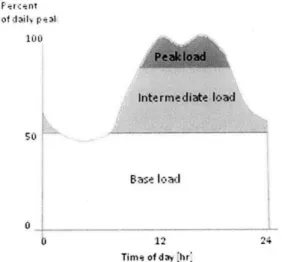
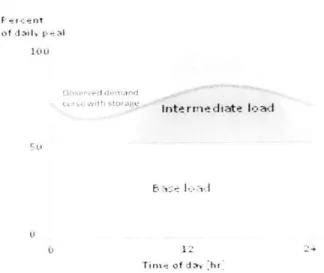
![Figure 4. [2] Specific heat of rock medium as a function of temperature. Granite and sandstone have a-p transitions](https://thumb-eu.123doks.com/thumbv2/123doknet/14172618.474815/12.918.211.674.505.869/figure-specific-medium-function-temperature-granite-sandstone-transitions.webp)
![Figure 5. [2] Thermal conductivity of rock medium as a ftinction of temperature](https://thumb-eu.123doks.com/thumbv2/123doknet/14172618.474815/13.918.230.679.89.413/figure-thermal-conductivity-rock-medium-ftinction-temperature.webp)
